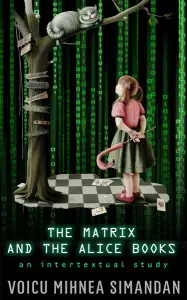 For Ferdinand de Saussure the relational nature of the word emerges from a vision of language seen as a generalized and abstract system which includes the spoken word and that which is spoken about. For Mikhail Bakhtin the relation originates from the existence of the word within specific social registers, and specific moments of utterance and reception. Since neither Saussure nor Bakhtin actually employs the term, most people credit Julia Kristeva as being the inventor of the term “intertextuality.” Kristeva has been influenced by both Saussurean and Bakhtinian models and attempts to combine their major theories.
For Ferdinand de Saussure the relational nature of the word emerges from a vision of language seen as a generalized and abstract system which includes the spoken word and that which is spoken about. For Mikhail Bakhtin the relation originates from the existence of the word within specific social registers, and specific moments of utterance and reception. Since neither Saussure nor Bakhtin actually employs the term, most people credit Julia Kristeva as being the inventor of the term “intertextuality.” Kristeva has been influenced by both Saussurean and Bakhtinian models and attempts to combine their major theories.
In the mid-1960s the French intellectual scene was one in which many established theories in philosophy, political theory, and psychoanalytic theory were being transformed by structuralists who had their origins in Saussurean linguistics. But there were also others who criticized Saussure’s theories, and who would later on become the post-structuralists. Attention to the role of literature and literary language was crucial to the rise of post-structualist theory.
In her writings, Kristeva attacked the stable signification centered on the transformation of Saussure’s concept of semiology into what was called semiotics. Structuralist semiotics argued for the objectivity of language, stating that myths, oral cultural traditions, literary texts, or any cultural text can be scientifically analyzed. But this approach neglected to give attention to the human subject who performs the utterance under consideration. It also does not account for the fact that signifiers are plural, full of historical meaning, directed not so much to stable signifiers as to a domain of other signifiers. All these aspects which were not taken into consideration by structuralist semiotics are exploited in Kristeva’s work, from which emerges her theory of intertextuality.
Kristeva established a new mode of semiotics, which she calls “semianalysis.” She emphasizes in this approach the idea that texts are always in a state of production, rather than being products to be quickly consumed. In her view, ideas are not presented as finished, consumable products, but are presented in such a way as to encourage readers to come up with their own interpretation of its meaning. Kristeva’s new semiotics of production thus blurs the distinction between science, or the logical, and language and imagination.
Kristeva was influenced not only by Saussure’s theories, but also by Bakhtin’s. It is through the combination of the Saussurean and Bakhtinian theories that Kristeva’s notion of intertextuality immerged. In Desire in Language: A Semiotic Approach to Literature and Art (1980), Kristeva revised and redirected Bakhtin’s work in one of her most important essays: The Bounded Text (pp. 36-63) and also in Word, Dialogue, and Novel (pp. 64-91). In this work, she is concerned with establishing the manner in which a text is constructed of already existent discourse. She argues that authors do not create their texts from their own mind, but rather compile them from pre-existent texts. Thus, the text becomes “a permutation of texts, an intertextuality in the space of a given text,” in which “several utterances, taken from other texts, intersect and neutralize one another” (Kristeva 1980: 36).
She argues that, the text is not an individual, isolated object but a compilation of cultural textuality. Kristeva believes that the individual text and the cultural text are made from the same textual material and cannot be separated from each other. This is basically a re-phrasing of the Bakhtinian notion of the “dialogue,” which established a relation between author, work, reader, society, and history. The distinction is that Kristeva’s theory paid close attention to text, textuality, and their relation to ideological structures. Bakhtin’s work centers on human subjects using language in specific social situations, while Kristeva’s work deals with more abstract notions, such as text and textuality. However, both Bakhtin and Kristeva believed that texts cannot be separated from the larger cultural or social textuality out of which they are constructed. Therefore, all texts contain ideological structures expressed through discourse.
According to Kristeva, texts do not present clear and stable meanings. They embody society’s conflict over the meaning of words. Thus, intertextuality deals with a text’s existence within society and history. Texts have no unity or unified meaning of their own; they are thoroughly connected to on-going cultural and social processes. A text’s meaning is understood, in Kristeva’s view, as a temporary re-arrangement of elements with socially pre-existent meaning. Meaning then, is simultaneously both ‘inside’ (reader’s view) and ‘outside’ (society’s influence) the text.
The communication between author and reader is always paired with an intertextual relation between words and their prior existence in past texts. As Kristeva stated: “any text is constructed as a mosaic of quotations; any text is the absorption and transformation of another” (Kristeva 1980: 66).
Kristeva argues that intertextuality coincides with the rise of Modernism, a period of cultural practice usually dated from the beginning of the 20th century and the publication of such authors as James Joyce, Marcel Proust, and Franz Kafka. Kristeva’s work on intertextuality focuses heavily on the late 19th century and early 20th century avant-garde writing. The avant-garde writers drew their inspiration from the invention and application of new or unconventional techniques, thus breaking free from old conventions, while challenging the norms.
Kristeva’s semianalytical approach extends beyond the literary text and includes other art forms, such as music, painting, and dance. It is thus not far fetched to assert that motion pictures should also be included in this category. Kristeva recognized that texts do not just utilize previous texts or other art forms but, rather, they transform them, which is why these sources are so difficult to identify.
Resources:
- Kristeva, J. (1980) Desire in Language: A Semiotic Approach to Literature and Art. Leon S. Roudiez (ed.), T. Gora et al (trans.). New York: Columbia University Press.
(Fragment from The Matrix and the Alice Books by Voicu Mihnea Simandan, p.22-25)
My intertextual study The Matrix and the Alice Books looks at the way Lewis Carroll’s Alice’s Adventures in Wonderland and Through the Looking-Glass have influenced some of the ideas put forth by Andy and Larry Wachowski. The book is now available as a Kindle ebook too.



Hi,
I am interested in making discourse study of selected critical texts. I wish to make analysis of the traditional and some of the early critics’ works from intertextuality point of view. I would like to analyse the system or pattern lying behind use of intertextuality by the critics.
Will you please pass your comments and assist me in my work?
Mr. Patil, Pune.
Hi,
I’m doing my thesis in my univ. I take intertextuality as the regarding theory. can it be done if my corpus here is two novels which are in sequel. the things i’m going to analyze are the intrinsic elements of them; characters,plot and setting. I’m going to reveal the similar and the difference between both novels. is it true of what i’m doing is match with Kristeva’s theory?
I am interested in this theory of intetextuality and please would desire if you could forward me some articles on it.
Thanks
K. Toh
Dear all, For more information on intertextuality and how I applied it to film studies, I recommend you read my book “The Matrix and the Alice Books” – it is available at amazon.com.
please I want short note about the intertextuality ???
@shosho: There’s a lot to “choose” from on this website: https://www.simandan.com/?tag=intertextuality. So, don’t be lazy!
So, I guess you have read Graham Allen’s book.
“Intertextuality (The New Critical Idiom)” by Graham Allen (Routledge, 2000) gives a very good overview of what intertextuality is. I recommended to all interested parties.
Please I’m interested in this theory of intertextuality and would be glad if could send me some articles or materials on it. Thanks
As I wrote in a previous comment, don’t be lazy. There are many articles on this website dealing with intertextuality and you can find further reading in the notes.
Hi,
I am a Senegalese and so much interested in Intertextuality, so I want books or articles that should help me thanks!
hello , how can we apply kristeva’s psychoanalytic theory on Alice in Wonderland ??
thank u for your help 🙂
As I said in my previous comments, read my books about the Matrix and the Alice books: http://www.amazon.com/Matrix-Alice-Books-Mihnea-Simandan-ebook/dp/B00C696N9U